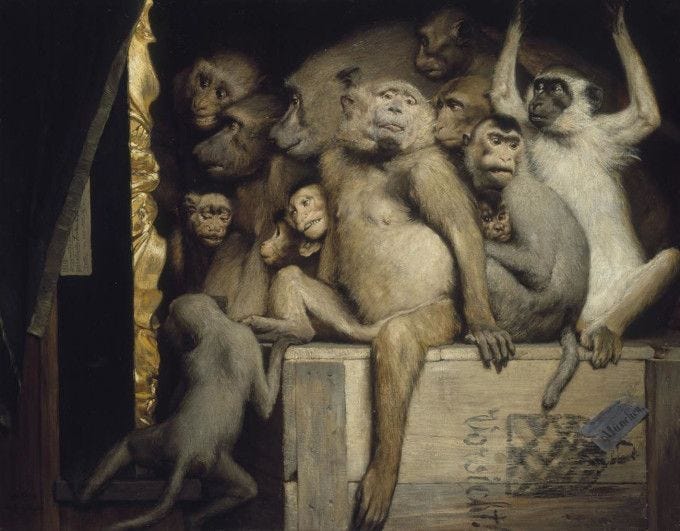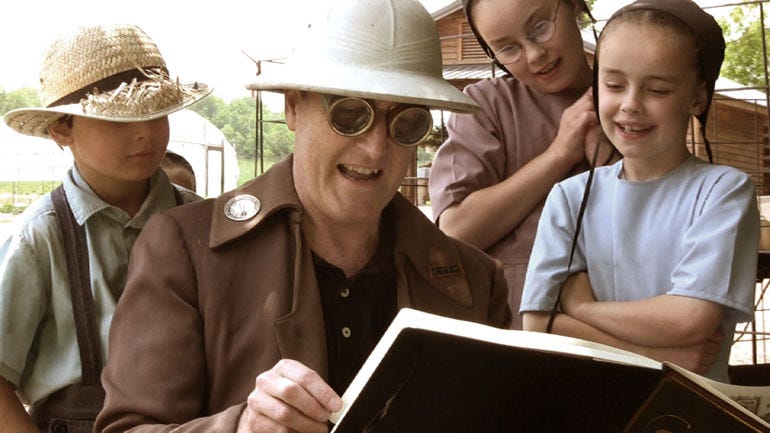Gabriel Cornelius Ritter von Max (1840-1915) often painted monkeys as critics.
FUN FACT: He actually lived with a family of monkeys.
Natasha asks:
"Because of all your videos, it has inspired me to want to go out and quit being afraid of what others think or say about my paintings. Yet I think we artists may be our biggest critics of all. How were you able to overcome any fears of hearing what bad things other people have to say?"
Natasha, you're right that our fellow artists—and ourselves—are usually our own toughest critics. That can be a good thing. It's helpful to hold ourselves to a high standard, always asking 'How can I make this better?' That self-criticism is what keeps us improving, hopefully. The other extreme, overconfidence, being overly satisfied with everything we do, can be as big a problem as being self-critical, and it makes a student unteachable.
At the same time, don't be so hard on yourself that you avoid taking risks. We all need to take satisfaction in our successes and in our experimental attempts, even if they don't work out the way we had hoped. You don't have to show anyone your duds. If they don’t come out the way you want, paint over them or put them on the Gallery Flambeau.
So should we shut off our inner critic? Sure, tell them to be quiet temporarily if that helps you get into the flow. But keep your critic nearby. You'll need that voice to guide the flow in the right direction.
Sketching on an Amish farm in Ohio
Practical tips to build back your confidence
Develop your determination and your steel nerves about trying out new media.
Be analytical in your experiments.
If you're overwhelmed with a complicated procedure, simplify the variables.
Try painting in grisaille, which removes the color issues.
Break the picture down into smaller steps.
Do more preliminary sketches. Confidence builds on little successes.
Most importantly, stay with the problem. My mantra is "All problems yield to effort."
If a piece isn't going the way you had hoped, ask for the private opinions of a few people you trust and give them permission to say what's not working about your piece. Be ready for honesty, and thank them for it. People are usually unwilling to offer constructive criticism unless you ask for it, especially on social media.
Try new things. Don't let fear of criticism cause you to hold back and play it safe. You don't want to keep doing the same thing over and over again just because you know it will work and you'll get approval for it.
It’s true—some strangers will walk by and make odd remarks when you're painting outside. Don’t worry about that. It's part of the sport. People say all kinds of nutty things, and just about every one of my pictures goes through stages of looking awful. But once in a while, you'll get a critical comment from a passerby that will really help you see you see your work in a new way. Keep your antenna tuned for that. Sometimes I’ve incorporated those suggestions and it has saved the painting.
Next let’s look at actual critics, professional critics, and let’s see how artists from the past have dealt with disparaging criticism designed to harm their reputations.
Keep reading with a 7-day free trial
Subscribe to Paint Here to keep reading this post and get 7 days of free access to the full post archives.




